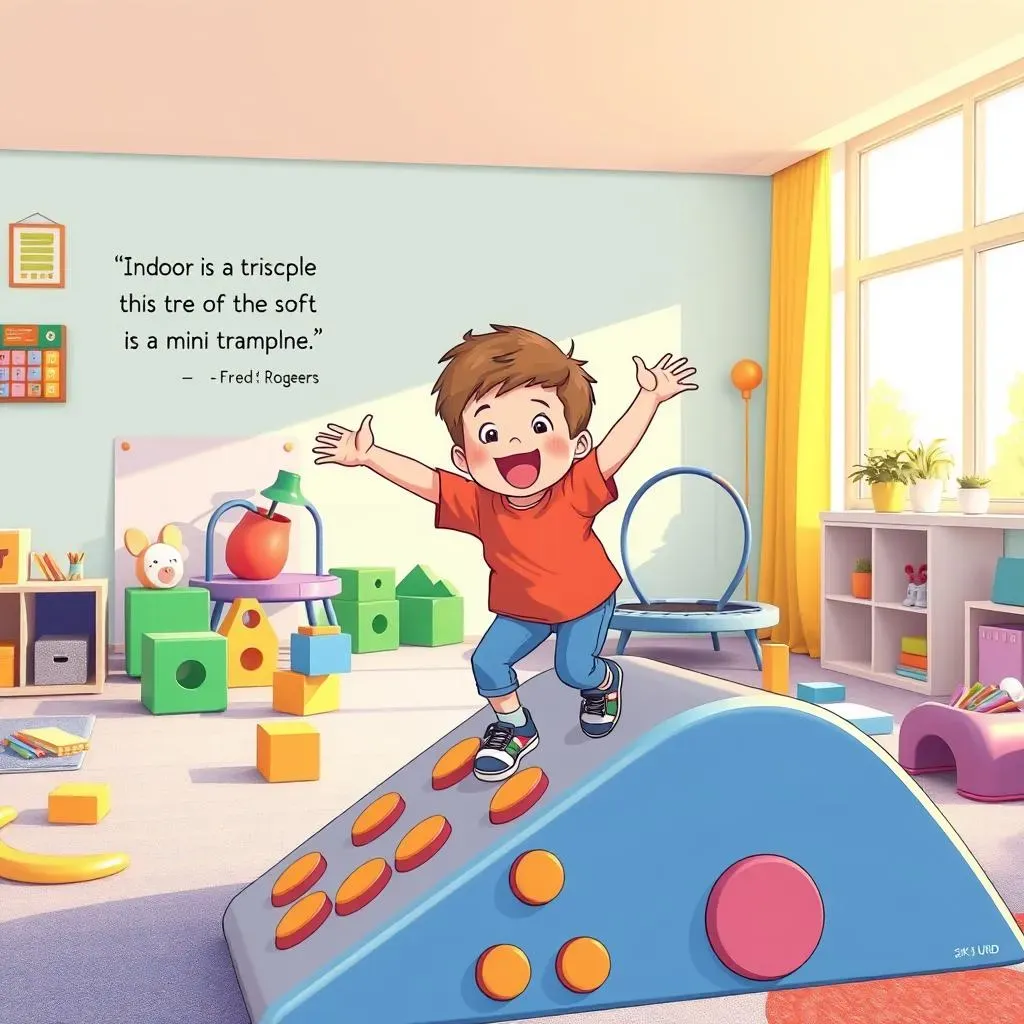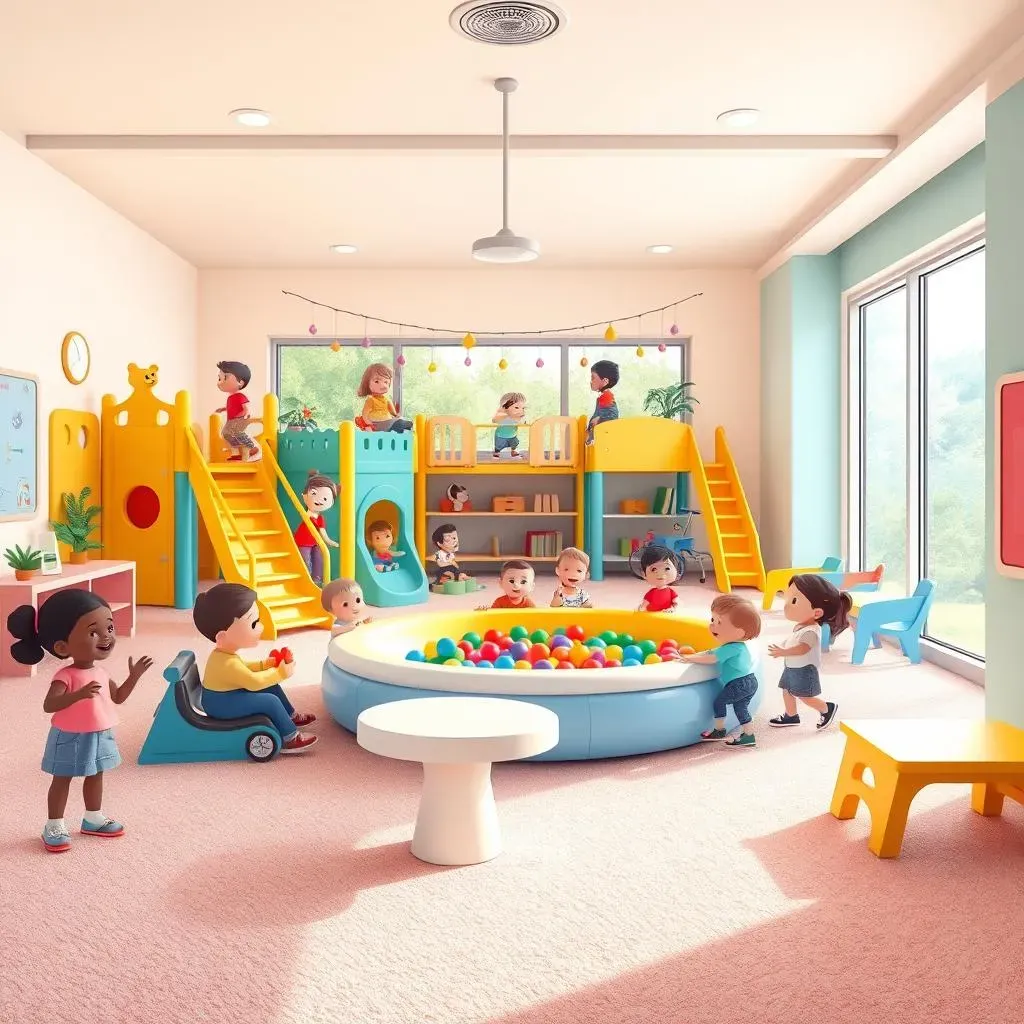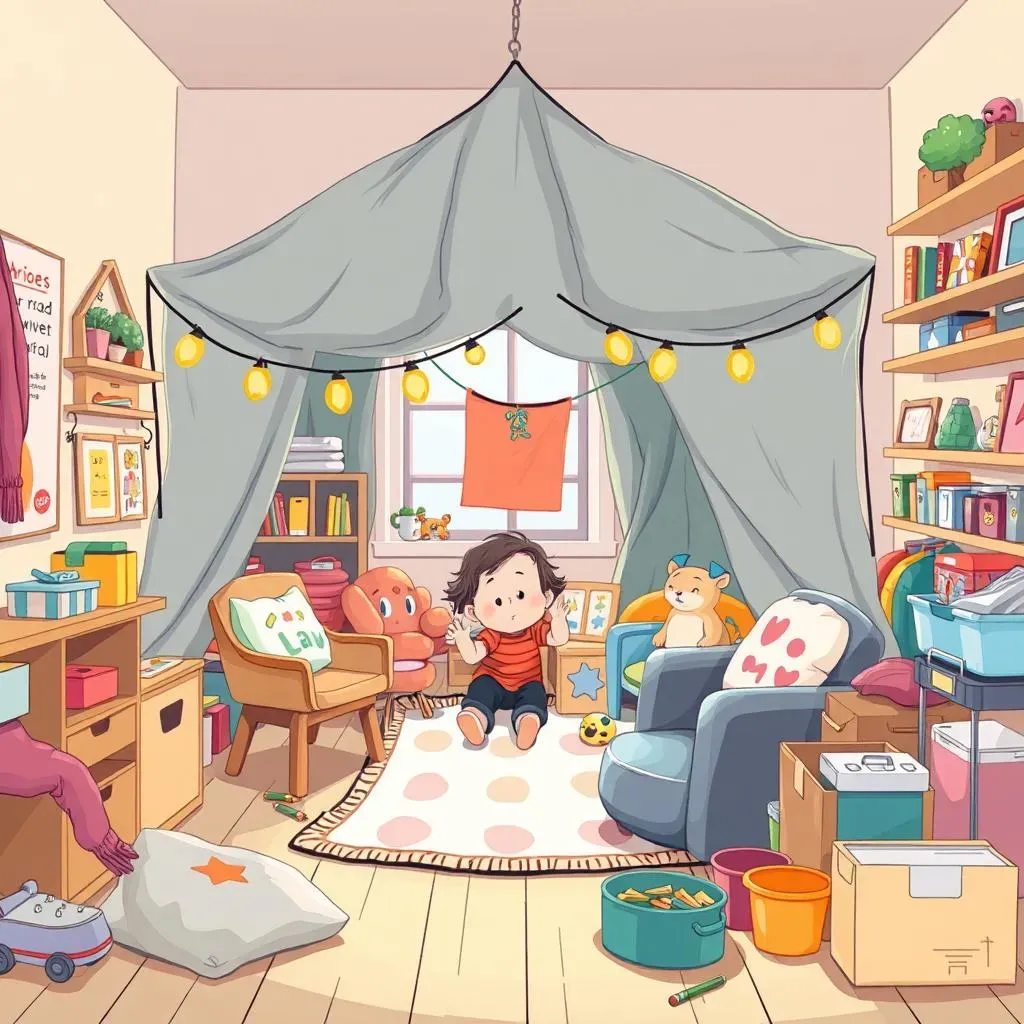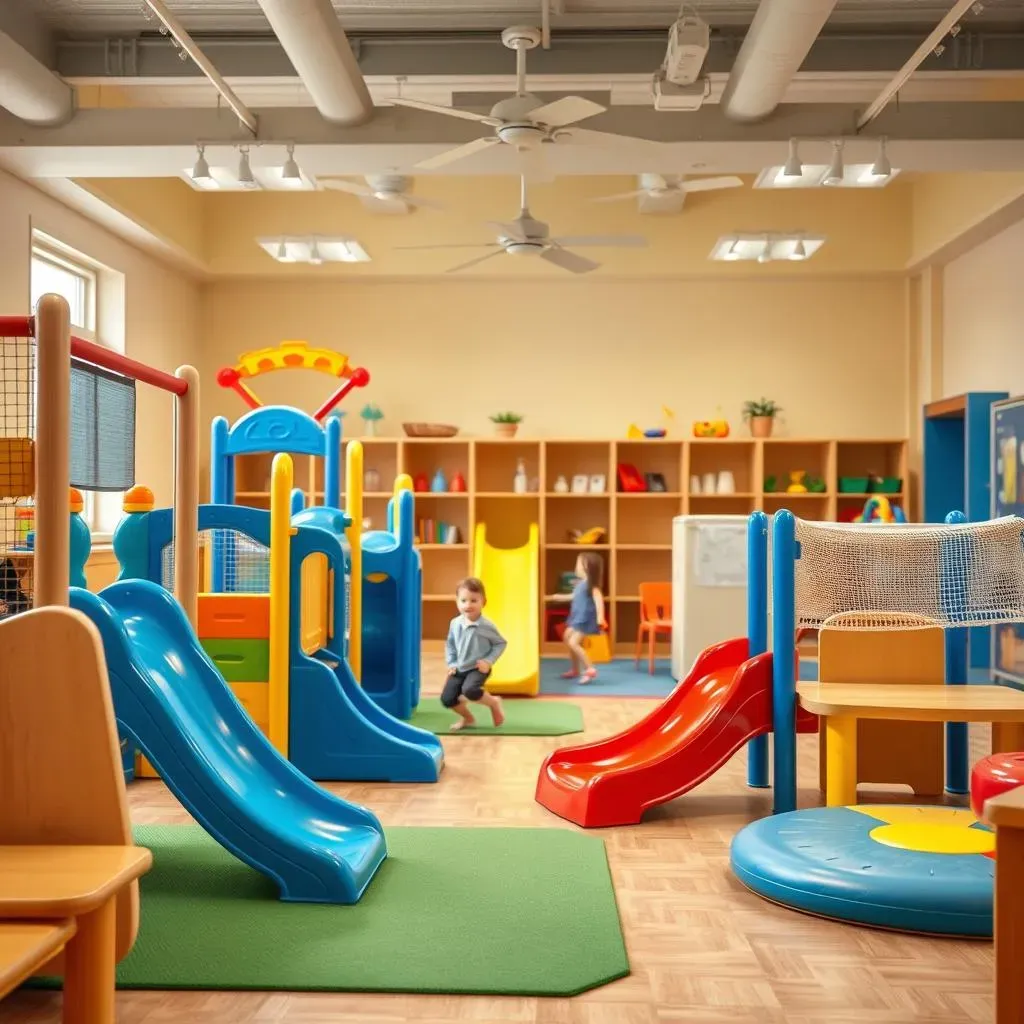Table of Contents
Finding the right indoor activities for your preschoolers can be a game-changer, especially when the weather outside isn't cooperating. That's where indoor play equipment for preschoolers comes in! But it's not just about keeping them busy. The right equipment can significantly boost their development, sparking creativity, improving motor skills, and encouraging social interaction, all within the safe confines of your home or classroom.
Why Indoor Play Equipment is Essential for Preschoolers' Development

Why Indoor Play Equipment is Essential for Preschoolers' Development
#1: Fueling Physical Development
Preschoolers are bundles of energy, and they need outlets to channel that energy into healthy physical development. Indoor play equipment provides just that! Think about it: mini climbing structures help them build gross motor skills, like coordination and balance. Soft play areas encourage them to explore spatial awareness and learn how to navigate different surfaces. Even something as simple as a small trampoline can improve their cardiovascular health and bone density.
It's not just about burning off steam; it's about building a solid foundation for future physical activities. When kids have access to safe and engaging indoor play options, they're more likely to develop the confidence and skills they need to participate in sports, dance, or any other physical activity they choose. Plus, in today's world where screen time often dominates, indoor play equipment offers a much-needed alternative that gets them moving and active, regardless of the weather outside.
#2: Igniting Cognitive and Social Growth
Indoor play equipment isn't just about physical activity; it's also a powerful tool for cognitive and social development. Imagine a group of preschoolers working together to build a fort with soft blocks. They're problem-solving, negotiating, and learning to cooperate – all essential social skills. Or picture a child using their imagination to create stories and scenarios while playing on a pretend play kitchen. They're developing their creativity, language skills, and understanding of the world around them.
The beauty of indoor play equipment is that it provides a structured yet open-ended environment for learning and exploration. It encourages kids to think outside the box, experiment with different ideas, and develop their own unique ways of interacting with the world. And because they're having fun while they're learning, they're more likely to stay engaged and retain the information they're absorbing. Indoor play equipment isn't just a way to keep kids entertained; it's an investment in their future success.
Developmental Area | Benefits of Indoor Play Equipment |
|---|---|
Physical | Improved gross motor skills, balance, coordination, cardiovascular health |
Cognitive | Enhanced problem-solving, creativity, language skills, spatial awareness |
Social | Increased cooperation, negotiation skills, communication, empathy |
Top Features to Look for in Indoor Play Equipment for Preschoolers

Top Features to Look for in Indoor Play Equipment for Preschoolers
Safety First: Prioritizing Safe Materials and Design
When it comes to indoor play equipment for preschoolers, safety isn't just a feature; it's the foundation. You want to ensure that the equipment is made from non-toxic materials, free from harmful chemicals like BPA and phthalates. Look for certifications like ASTM or CPSIA, which indicate that the product has been tested and meets safety standards. Also, consider the design: are there any sharp edges or small parts that could pose a choking hazard? Rounded corners, smooth surfaces, and securely fastened components are essential.
Pay close attention to the weight capacity of the equipment. Overloading it can lead to accidents and injuries. Make sure the equipment is stable and won't easily tip over, especially if it's designed for climbing or active play. Non-slip surfaces are also a must, reducing the risk of slips and falls. Ultimately, choosing safe materials and designs is about creating a worry-free play environment where kids can explore and have fun without compromising their well-being.
Durability and Longevity: Investing in Quality
Preschoolers aren't exactly known for their gentle touch, so durability is a key consideration when selecting indoor play equipment for preschoolers. You want equipment that can withstand the rigors of daily use and last for years to come. Look for sturdy construction, high-quality materials, and reinforced joints. Solid wood, durable plastics, and metal frames are all good options, depending on the type of equipment.
Consider the long-term cost-effectiveness of investing in quality. While cheaper options might seem appealing upfront, they often break down quickly and need to be replaced, costing you more in the long run. Durable equipment, on the other hand, can withstand years of use and even be passed down to younger siblings or other children. Plus, it's more sustainable and reduces waste. When you invest in quality, you're not just buying play equipment; you're buying peace of mind and a lasting source of fun for your little ones.
Feature | Why It Matters |
|---|---|
Non-toxic Materials | Ensures children aren't exposed to harmful chemicals |
Rounded Edges | Reduces risk of cuts and scrapes |
Sturdy Construction | Withstands rough play and prevents breakage |
Age Appropriateness | Ensures equipment is suitable for preschoolers' developmental stage |
Age Appropriateness and Developmental Suitability
Not all indoor play equipment for preschoolers is created equal. It's crucial to choose equipment that is specifically designed for their age group and developmental stage. A toddler climbing structure, for example, might be too challenging for a younger child, while a simple stacking toy might not hold the attention of an older preschooler. Look for equipment that matches their current abilities and encourages them to develop new skills.
Consider the developmental benefits of each piece of equipment. Does it promote gross motor skills, fine motor skills, cognitive development, or social interaction? Choose a variety of equipment that addresses different areas of development, providing a well-rounded play experience. Also, think about the child's individual interests and preferences. Do they love to climb, build, or pretend play? Choose equipment that aligns with their passions and encourages them to engage in meaningful and enjoyable play. After all, the best play equipment is the kind that kids actually want to play with!
Creative Indoor Play Equipment Ideas for Preschoolers on a Budget

Creative Indoor Play Equipment Ideas for Preschoolers on a Budget
DIY Fort Building: Unleash Imagination
Who says you need to spend a fortune to create an epic play space? A simple fort can provide hours of entertainment and imaginative play. Grab some blankets, sheets, pillows, and chairs, and let your preschoolers' creativity run wild! They can design their own secret hideaway, complete with windows, doors, and even a "no adults allowed" sign. Encourage them to decorate the fort with drawings, paintings, or anything else that sparks their imagination.
For an extra touch of magic, add some string lights or battery-operated candles to create a cozy and inviting atmosphere. You can also incorporate educational elements into the fort, such as books, puzzles, or maps. The possibilities are endless! The best part is that fort building is a collaborative activity that encourages teamwork, problem-solving, and communication skills. Plus, it's a great way to recycle old materials and give them a new purpose.
Repurposed Household Items: Turning Trash into Treasure
Look around your house – you might be surprised at how many everyday items can be transformed into fun and engaging play equipment. Cardboard boxes, for example, can become anything from a race car to a castle to a spaceship. Let your preschoolers decorate them with paint, markers, and stickers, and watch their imaginations take flight. Plastic containers can be used for sensory bins, filled with rice, beans, or water beads. Old clothes can be turned into costumes for dress-up play.
The key is to think outside the box and see the potential in ordinary objects. Not only is this a budget-friendly way to create indoor play equipment, but it also teaches children about recycling, repurposing, and environmental responsibility. Plus, it encourages them to be creative and resourceful, developing their problem-solving skills and fostering a sense of accomplishment. So, before you toss something in the trash, ask yourself: "Could this be turned into something fun?"
DIY Project | Materials Needed | Skills Developed |
|---|---|---|
Cardboard Box Maze | Cardboard boxes, tape, markers | Problem-solving, spatial reasoning, creativity |
Sensory Bin | Plastic container, rice/beans/water beads, scoops/cups | Fine motor skills, sensory exploration, hand-eye coordination |
Costume Creation | Old clothes, fabric scraps, scissors, glue | Imagination, creativity, fine motor skills |
Maintaining Safety and Hygiene of Indoor Play Equipment for Preschoolers

Maintaining Safety and Hygiene of Indoor Play Equipment for Preschoolers
Regular Cleaning Schedule: Preventing Germ Havens
Indoor play equipment for preschoolers can quickly become a breeding ground for germs if not cleaned regularly. Preschoolers aren't exactly known for their hygiene habits, so it's up to us to create a clean and healthy play environment. Establish a regular cleaning schedule, wiping down equipment at least once a week, or more often if it's heavily used. Use a mild soap and water solution or a disinfectant wipe specifically designed for children's toys. Pay close attention to high-touch areas, such as handles, knobs, and climbing surfaces.
For soft play equipment, such as foam blocks or mats, consider using a vacuum cleaner to remove dust and debris. You can also spot-clean stains with a mild detergent and water. If the equipment is machine-washable, follow the manufacturer's instructions carefully. Remember, consistency is key. The more often you clean, the less likely germs are to accumulate. By implementing a regular cleaning schedule, you can minimize the risk of illness and create a safer and more enjoyable play space for your little ones.
Safe Disinfectant Choices: Avoiding Harmful Chemicals
While cleaning is essential, it's equally important to choose the right cleaning products. Many common household cleaners contain harsh chemicals that can be harmful to preschoolers. Look for disinfectants that are specifically labeled as safe for children's toys and play equipment. Avoid products that contain bleach, ammonia, or strong fragrances. Opt for natural or plant-based cleaning solutions whenever possible. These are often just as effective at killing germs but are less likely to cause skin irritation or respiratory problems.
Before using any new cleaning product, test it on a small, inconspicuous area of the equipment to ensure it doesn't damage the material. Always follow the manufacturer's instructions carefully, and allow the equipment to air dry completely before allowing children to play on it. Consider making your own natural cleaning solution using ingredients like vinegar, baking soda, and essential oils. These are safe, effective, and environmentally friendly alternatives to commercial cleaners. Remember, the goal is to create a clean environment without compromising children's health.
Cleaning Task | Recommended Cleaning Supplies | Frequency |
|---|---|---|
Wiping down surfaces | Mild soap and water, disinfectant wipes (child-safe) | Weekly (or more often if needed) |
Vacuuming soft play equipment | Vacuum cleaner with upholstery attachment | Weekly |
Spot-cleaning stains | Mild detergent and water | As needed |
Regular Inspections and Maintenance: Preventing Accidents
Maintaining the safety of indoor play equipment for preschoolers goes beyond just cleaning. Regular inspections are crucial for identifying potential hazards before they lead to accidents. Check for loose screws, broken parts, or damaged surfaces. Tighten any loose screws, repair or replace broken parts, and sand down any rough edges or splinters. Pay close attention to climbing structures, slides, and swings, ensuring that they are stable and secure.
If you notice any significant damage or wear and tear, remove the equipment from use immediately until it can be properly repaired or replaced. Don't try to fix it yourself unless you have the necessary skills and expertise. It's always better to err on the side of caution when it comes to safety. Consider creating a checklist to guide your inspections, ensuring that you cover all the essential areas. By performing regular inspections and maintenance, you can minimize the risk of accidents and create a safe and enjoyable play environment for your preschoolers.
Creating Joyful and Enriching Indoor Play Experiences for Preschoolers
Investing in the right indoor play equipment for preschoolers is more than just buying toys; it's about fostering growth, sparking imagination, and creating a safe, engaging environment where children can thrive. By prioritizing safety, considering developmental needs, and exploring creative, budget-friendly options, you can transform any space into a stimulating playground. Remember, the goal is to provide opportunities for active play, social interaction, and joyful learning, ensuring that even on the rainiest days, your preschoolers can explore, discover, and grow to their full potential. So, go ahead, unleash the power of play and watch your little ones flourish!